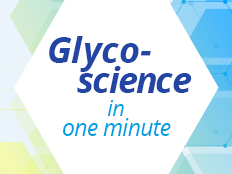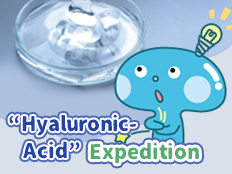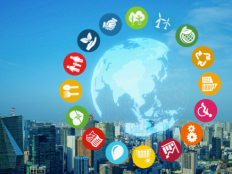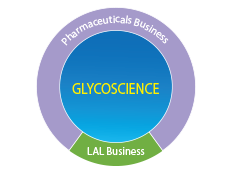Seikagaku engages in research and development of innovative drugs that contribute to health and fulfill the lives of people around the world.
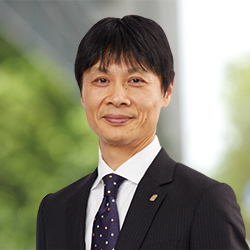
- 拡大
- Executive Vice President
Research & Development
Yosuke Funakoshi
Seikagaku Corporation continues to fully utilize our leading-edge technologies and wealth of expertise in the field of glycoscience cultivated over many years in a tireless effort to satisfy unmet medical needs. We have made it our corporate mission to lead the way to a bright future for patients around the world by creating original and innovative pharmaceuticals and medical devices.
Seikagaku has completed the third year of the mid-term management plan launched in the fiscal year ended March 31, 2023. We have positioned the period of the management plan as “A period for achieving growth” and are implementing key measures set out in the plan to bring to market products now in late-stage development and cultivate the ability to achieve sustained growth.
The Research & Development Division has submitted to the U.S. Food and Drug Administration (FDA) an application for approval of SI-6603, a treatment for lumbar disc herniation, and in March 2025 received a Complete Response Letter (CRL). Although SI-6603 was not approved, broad support for approval was received at a meeting of an Advisory Committee (a panel of outside experts) held in January 2005, and no concerns of a clinical nature were expressed in the CRL. Currently, we are responding to observations made concerning manufacturing and quality control with the aim of obtaining approval at an early date.
Also, in July 2023, results showing statistically significant adhesion prevention performance in both the primary endpoint and secondary endpoints and confirming safety were obtained in a pivotal study of SI-449, an adhesion barrier developed in Japan, in the field of gastroenterological surgery. Since the prospects for construction of commercial production facilities are promising, we plan to submit an application for approval of SI-449 during the fiscal year ending March 31, 2026.
Furthermore, we initiated Phase III clinical studies in Japan targeting osteoarthritis of the knee and hip joints for Gel-One, which is already available in the U.S., Italy, and Taiwan. We aim to provide a new treatment option in Japan alongside ARTZ and JOYCLU.
With SI-6603 (U.S.), SI-449 (Japan), and Gel-One (Japan), we have a well-stocked pipeline of products in late-stage development. In addition to creating new development themes in our current fields, by utilizing results of research in the field of glycoscience spanning more than 75 years, we have made progress in efforts to further enhance innovative research themes that realize integration with new modalities.
The Research & Development Division will continue to enhance pipelines to respond to the unmet needs of even greater numbers of patients. Globalization of each division and department is an important challenge for Seikagaku, which obtains more than 50% of its revenues from overseas markets. We will endeavor to collaborate with overseas subsidiaries and business partners so that Seikagaku can more swiftly provide products to the global market.
In order to rapidly and continuously create new products, Seikagaku engages in efficient R&D activities by focusing on target compounds and prioritizing target diseases. The focus of our drug discovery is glycosaminoglycans (GAG), which are the structural components known as glycoconjugates.
In research spanning nearly 70 years, we have accumulated a wealth of experience and expertise related to GAG drug discovery research and GAG production and formulation technologies. Today, we apply hyaluronic acid or unmodified GAG in pharmaceuticals and also engage in research and development of modified GAG produced using a cross-linking technology as well as enzymes and other substances that act on GAG. Given the properties of GAG, we focus mainly on orthopedic disorders and ophthalmic diseases as high-priority areas for now, where we have expertise through the development of such products as ARTZ Dispo joint function improving agent and OPEGAN ophthalmic viscoelastic device.
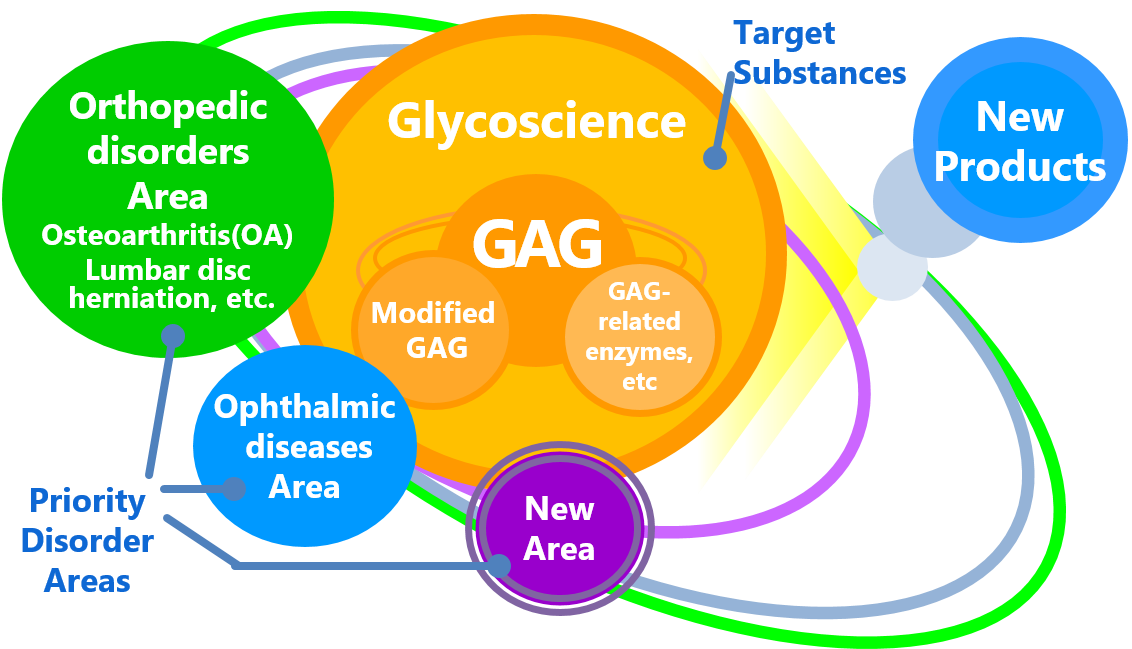
Seikagaku’s Management Creed states: “Under the principle of respect for learning, we contribute to human wellbeing by creating and supplying the world with safe and useful pharmaceutical products based on glycoscience.” In keeping with this creed, we have made glycoscience the core foundation of our business and explicitly adopted a stance of respect for learning. Seikagaku’s origin is closely bound up with this creed.
In 1950, Seikagaku became the first company in the world to successfully produce chondroitin sulfate, which is a sort of GAG, on a commercial scale. This breakthrough laid the foundation for our current business, which is centered on glycoscience. The manufacture of chondroitin sulfate marked the starting point for expansion of our business to bulk products, as well as reagents and diagnostics, and this has led to the strengthening of our ties to glycoscience related academia and research institutes.
Through this close relationship with academia, we acquired the idea of applying hyaluronic acid in pharmaceuticals. R&D activities spanning many years culminated in 1987 with the successful development and launch of ARTZ, the world’s first joint function improving agent whose main ingredient is hyaluronic acid. The development of HERNICORE, a treatment for lumbar disc herniation that contains condoliase, an enzyme that degrades GAG, also originated from collaboration with academia.
Seikagaku will continue to make glycoscience the central focus of R&D activities and, on the basis of research results in the field of glycoscience achieved in collaboration with universities and research institutes, strive to create pharmaceuticals and medical devices and deliver them to patients around the world.
GAG are formed when amino sugars (sugars that include nitrogen atoms) and uronic acids (a class of sugar acids) or galactose are linked together to form chain-like structures (sugar chains). Sugar chains are known in the life sciences as the third biological chain, along with nucleic acids and proteins, but they have complex chemical structures because they are molecules that handle various kinds of information within living organisms. In research in areas such as structural analysis, automatic synthesis, and large-scale synthesis, this complexity poses characteristic difficulties not found in other biological materials.
However, long-term efforts in the industry and academia have advanced the structural analysis and synthesizing technologies of sugar chains. In addition, the genes of sugar-chain synthesizing enzymes and degrading enzymes have been comprehensively identified, and our understanding of the homeostasis of sugar chains in living organisms and their pathological function is advancing.
This progress in glycoscience technologies is closely linked with Seikagaku’s drug discovery research.

Seikagaku possesses a GAG compound library, GAG-related enzymes, and wide-ranging technologies for manipulating these substances.We actively utilize these assets, accumulated in the course of research spanning many years, in drug discovery activities.We have also developed a global network of collaborating glycoscience researchers and engage in multiple joint research projects with universities and research institutes.
Specifically, we continue to focus on drug discovery for orthopedic disorders and ophthalmic diseases and have also begun utilizing GAG-related technology to expand new fields. At the same time, we make efforts to maximize the value of our products on the market or themes in development through expansion of indications, additional formulations, changes in dosage and administration, etc.
Until now, Seikagaku has followed a drug discovery approach of increasing the bioactivity of GAG, mainly through GAG modification and processing, and we are currently applying GAG to drug delivery systems (DDSs). Furthermore, going forward, we will also adopt an approach focused on the biological functions of sugar chains to open up new possibilities in drug discovery.
In our DDS, we are researching technologies that utilize the characteristics of modified GAG to freely control drug dose and the location and timing of release. We will pursue drug discovery and development capable of responding to a wide range of unmet medical needs by designing GAG for various modalities—not only low-molecular compounds, but also so-called middle molecules, such as peptides and nucleic acids, and high polymers, such as proteins—and providing Seikagaku’s own DDS.
While we strive to speed-up in-house development, we are also keen to introduce development themes from outside research institutes, bioventure companies and pharmaceutical companies. In addition to orthopedic disorders, we target diseases and therapies having high unmet medical needs. We periodically review in-licensing candidates, always seeking balance with the progress of other development themes. We are also working to strengthen our research network in Japan and overseas, as well as to streamline the R&D organizational structure.
Seikagaku, while its scale is small compared with major pharmaceutical companies, invests much of its management resources in new drug development by entrusting sales of its products to other companies. This is apparent in the basic policy that 25 to 30% of net sales is invested in R&D expenses each year and one third of all employees is engaged in R&D (about 45% on a non-consolidated basis). Seikagaku continues to emphasize R&D activities as a R&D-oriented pharmaceutical company.

